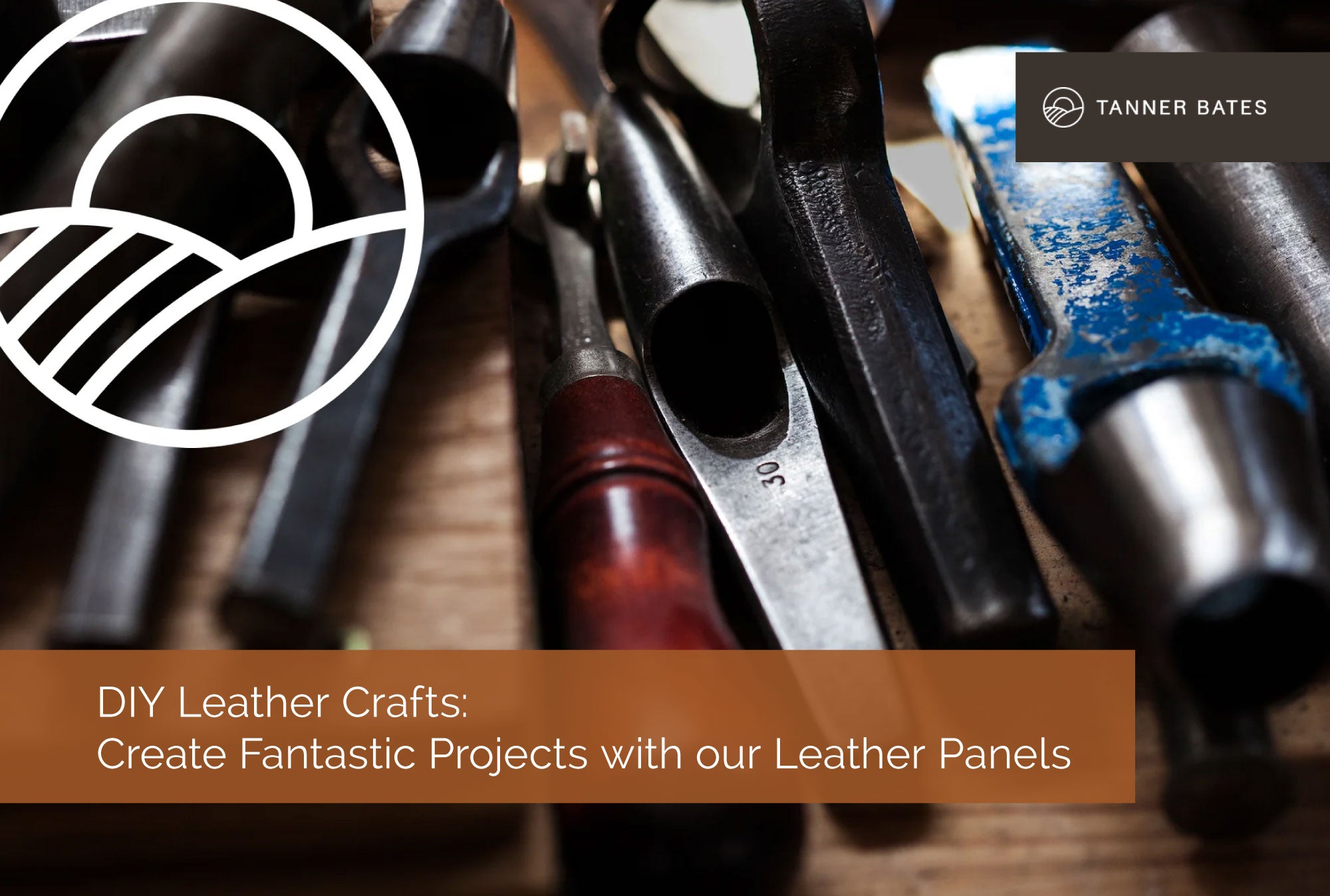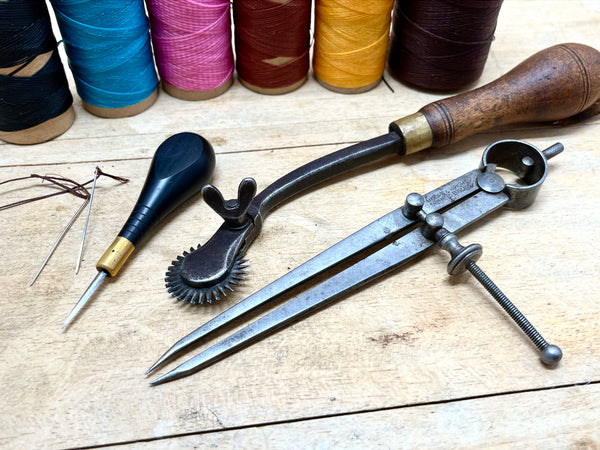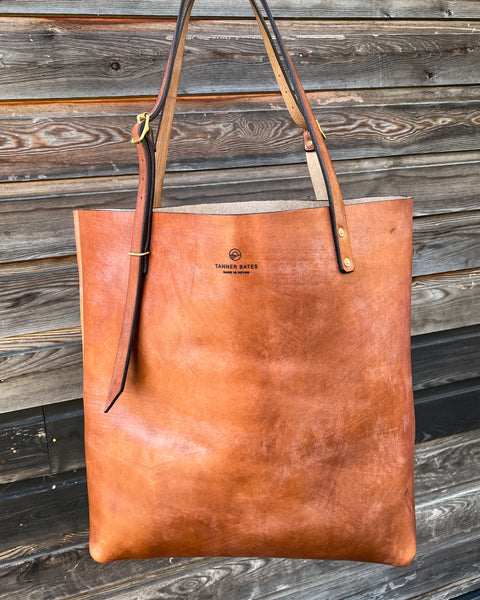
DIY Leather Crafts: Create Fantastic Projects with our Leather Panels
DIY Leather Crafts: Create Fantastic Projects with our Leather Panels
Leather, a material known for its resilience and aesthetic appeal, has been used in crafting for centuries. Whether you're a seasoned craftsman or a beginner looking to delve into a new hobby, creating your own leather projects offers a unique way to express creativity and develop practical skills. In this comprehensive guide, we will explore various DIY leather crafts that are simply fantastic for all skill levels.
Introduction to Leather Crafting
Leather crafting is an art form that dates back to the dawn of human civilisation. It involves transforming raw hides into functional or decorative items. From wallets to bags, keychains to laptop sleeves, and even home décor – leather crafting opens up a world of possibilities.
What Makes Leather a Preferred Crafting Material?
Leather is an incredibly versatile material that offers numerous benefits for crafting:
Durability: Leather is a sturdy, long-lasting material that withstands wear and tear.
Natural Beauty: Leather's natural beauty and variety in textures and colours make it an attractive material for crafting.
Versatility: Leather can look sophisticated or Boho, depending on the project.
Workability: Leather can be carved, painted, moulded and stamped, making it perfect for various crafts.
Sustainability: Upcycling and repurposing leather can enhance your green credentials when crafting. Furthermore, depending on where the leather is sourced and how it is tanned, it can be a sustainable and eco-friendly alternative to manmade/synthetic materials.
Durability: Leather is a sturdy, long-lasting material that withstands wear and tear.
Natural Beauty: Leather's natural beauty and variety in textures and colours make it an attractive material for crafting.
Versatility: Leather can look sophisticated or Boho, depending on the project.
Workability: Leather can be carved, painted, moulded and stamped, making it perfect for various crafts.
Sustainability: Upcycling and repurposing leather can enhance your green credentials when crafting. Furthermore, depending on where the leather is sourced and how it is tanned, it can be a sustainable and eco-friendly alternative to manmade/synthetic materials.

Tools for Leather Crafting
To get started with leather crafting, you'll need some essential tools. Here's a quick list of what you might need:
Awl: Used for marking, piercing, punching, or sewing leather.
Beveler: Removes the square corners from the edges of leather goods.
Burnisher: Used to smooth and harden the edges of leather.
Cutting Tools: These could include a sharp craft or saddlers round knife, strap cutter for straight lines or a rotary cutter for curves. A sharp blade is essential for a clean cut.
Glue: Ensure you're using contact adhesive specific for leather and suede.
Maul: A striking tool (hammer/mallet) used for stamping, tooling, and setting rivets.
Pricking Iron and Chisel: Used for marking and creating holes in leather.
Punch: A hole punch specifically for making holes in leather.
Skiver: Used to remove and shave thin layers of leather material off the surface.
Stamp: Used to create designs on your leather's surface.
Sewing Tools: These include needles, thread, and stitching pony to hold leather while you sew.
Cutting Mat: Protects your table when cutting leather with a utility blade or rotary cutter.
Awl: Used for marking, piercing, punching, or sewing leather.
Beveler: Removes the square corners from the edges of leather goods.
Burnisher: Used to smooth and harden the edges of leather.
Cutting Tools: These could include a sharp craft or saddlers round knife, strap cutter for straight lines or a rotary cutter for curves. A sharp blade is essential for a clean cut.
Glue: Ensure you're using contact adhesive specific for leather and suede.
Maul: A striking tool (hammer/mallet) used for stamping, tooling, and setting rivets.
Pricking Iron and Chisel: Used for marking and creating holes in leather.
Punch: A hole punch specifically for making holes in leather.
Skiver: Used to remove and shave thin layers of leather material off the surface.
Stamp: Used to create designs on your leather's surface.
Sewing Tools: These include needles, thread, and stitching pony to hold leather while you sew.
Cutting Mat: Protects your table when cutting leather with a utility blade or rotary cutter.

Types of Leather for Crafting
There are several types of leather available in the market, each with unique properties that make them suitable for different projects. The most common types of leather used in leather crafting are veg tan and chrome tan. Veg tan leather is tanned by steeping the raw hides in a tannin-rich solution created by mixing tree bark with water, while chrome tan leather uses chemicals for tanning.
Preparing Your Leather
Put the leather on a flat surface and inspect it for any imperfections. Estimate and indicate the areas of the leather that will be utilised for the project. Utilise a template as a guide when measuring and plotting the cut lines. To make sure the lines are apparent, use a scratch awl.

Cutting Your Leather
When tackling a leather project, the choice of cutting tool will vary depending on its purpose. If the material is thin and supple, scissors or shears could be utilised. On the other hand, a sharp craft knife or Stanley knife could be suitable for creating curves or straight lines. If the project requires any straight lines, such as a belt or collar, a strap cutter is the optimal option.
Leather Crafting Skills and Techniques
When beginning leatherworking, it is important to understand the essential skills and techniques that come with it. These skills can range from something basic, like a keychain to something more complex like a backpack. With a basic understanding of these techniques, it is possible to progress to more advanced projects.
Gluing Leather
When it comes to adhering leather pieces, it is best to use a glue specifically designed for leather and suede. Ensure you are in a space that has good airflow when working with this type of adhesive. For optimal results, you may want to roughen or sand the two surfaces that need to be joined.
Casing Leather
The veg-tanned leather, in its natural and unprocessed state, can be softened and altered in shape by the addition of water in a process called casing. This enables the leather to be stamped, moulded and shaped.
Saddle Stitching Leather
Joining two pieces of leather together is possible with the use of saddle stitching, a strong hand-sewn stitch. In order to do this, one must have a piece of waxed thread and two harness needles.
Dyeing Leather
You can dye leather any shade you like, and this works especially well with natural undyed veg-tanned tooling hides. To apply the dye, use a sheep wool applicator. To ensure an even colour, it's best to add multiple thin layers of pigment.
Burnishing Leather
To produce a smooth and clean look, burnishing involves polishing the rough edges. This may take a bit of time, but the effort pays off. Begin by rounding off the edge and then pre-buff it using a cloth, the moisture, usually from the edge dye/finish will help achieve this polished look to the cut edge. This process is not possible with chrome tanned leather.
Skiving Leather
Thinning out leather can be done with a metal tool called a skiver which is designed to remove and shave off thin layers of the material. This makes the leather more malleable and easier to form into folds, bends, and to conceal seams.
Beginner Leather Projects
Beginner Leather Projects
When it comes to beginner leather projects, the options are vast. You could start with small items like wallets, belts, keychains, or glasses cases to hone your skills. Once you've mastered these, you can move onto larger projects such as tote bags, laptop cases, or even customised luggage tags.


Leather Keychains
Keychains are quick and easy to make, requiring only a small piece of leather and some hardware. You can customise your leather keychain's length, hardware, and stitching colour, making it a perfect personalised gift or a stylish accessory for your own keys.
Leather Glasses Case
A leather glasses case is slightly more complex than a keychain, but still an excellent project for beginners. Start by measuring the glasses that will be housed in the case and cut the leather accordingly. Sew the edges together, leaving an opening at the top to insert the glasses.
Leather Wallet
A classic leather wallet or card case is a favourite beginner project for many. Start with a simple card holder to learn the ropes, then progress onto a bi-fold wallet as your skills improve. This is an excellent opportunity to experiment with different types of leather, stitching techniques, and even some personalisation.
Leather Luggage Tags
Luggage tags are a fantastic way to put your leather crafting skills to practical use. Create a strap that can be secured with a rivet, stitching, or snap. You can add a window to display contact information, making your bags easy to identify on the luggage carousel.

Leather Bags
While bags are typically seen as more advanced leather projects due to their size, simple bags like totes are a great starting point for beginners. Decide on the dimensions of your tote bag, cut the leather accordingly, and sew the sides together. You can add handles using either sewing or rivets.
Tips for Choosing Beginner Leather Projects
Choosing the right beginner leather project depends on your personal interests and goals. Here are some tips to consider:
Consider Your Interests: Choose a project that you're genuinely excited about. If you're passionate about the item you're making, you're more likely to enjoy the process and stay motivated.
Start Small: If you're new to leather crafting, start with a small, simple project. This will allow you to get a feel for the materials and techniques without becoming overwhelmed.
Think About Functionality: Consider making something that you can use in your daily life. Not only will this give you a sense of accomplishment, but it will also allow you to see how your item holds up with regular use, giving you insights into what works and what doesn't.
Experiment: Don't be afraid to experiment and make mistakes. Leather crafting is a learning process, and each project will help you improve your skills.
Conclusion
Leather crafting can be a rewarding hobby, allowing you to create beautiful, functional items with your own hands. Whether you're a seasoned craftsman or a beginner, there's always something new to learn and create. So, why not start your journey with these fantastic DIY leather crafts? Remember, the best project is the one that inspires you to create, learn, and, most importantly, have fun!
For the leatherworking enthusiast, home crafter, and artisan maker, our selection of leathers here at Tanner Bates is now accessible in easy-to-use panels to fit any home making needs.
Our panels are available in sizes from A5 to A2, and our leather is sourced from renowned traditional tanneries all over the world. Indulge in a luxurious piece of full-grain vegetable tanned or oak bark tanned leather for your next project - from card holders to wallets, sheaths to journals, we've got you covered. Your chosen panel size will be intricately hand cut to order from our full grain veg tan hides by one of our artisans.
Leave a comment
Comments will be approved before showing up.
Also in News

How a Devon Leather Messenger Bag Transforms Your Office Style
One accessory that can truly elevate your office style is the messenger bag, but not just any ordinary messenger bag. We're talking about the exquisite Devon leather messenger bag from Tanner Bates.
In this article, we'll delve into the unparalleled quality, durability, and timeless style of the Devon leather messenger bag.

Venture Further with Less: Discovering Compact Travel with the Venford Hip Bag
Are you tired of lugging around massive suitcases and feeling weighed down on your travels? Well, get ready to embrace the minimalist travel trend. It's all about packing light, staying mobile, and truly immersing yourself in the journey.
And let us introduce you to the perfect companion for this adventure: the Venford Hip Bag from Tanner Bates. This sleek, compact bag is designed for those seeking the perfect balance between style, functionality, and mobility.

A Detailed Comparison: Full Grain and Top Grain Leather Explained
When it comes to the world of leather, the difference between full-grain and top-grain leather can often lead to confusion. Both terms are frequently thrown around in leather-related conversations, yet the exact distinctions between the two remain unclear to many. Considering the significant impact these differences can have on leather goods' quality, durability, and aesthetics, it's crucial to get a solid grasp of these concepts.
